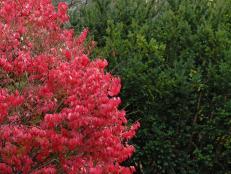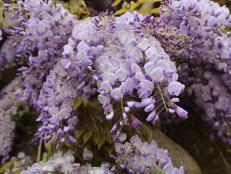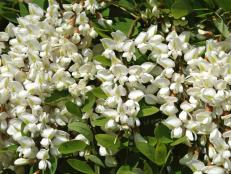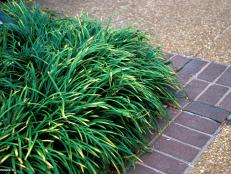Why You Shouldn’t Grow a Mimosa Tree
Though beautiful in bloom, mimosa spreads quickly into natural environments, quickly crowding out native plants.
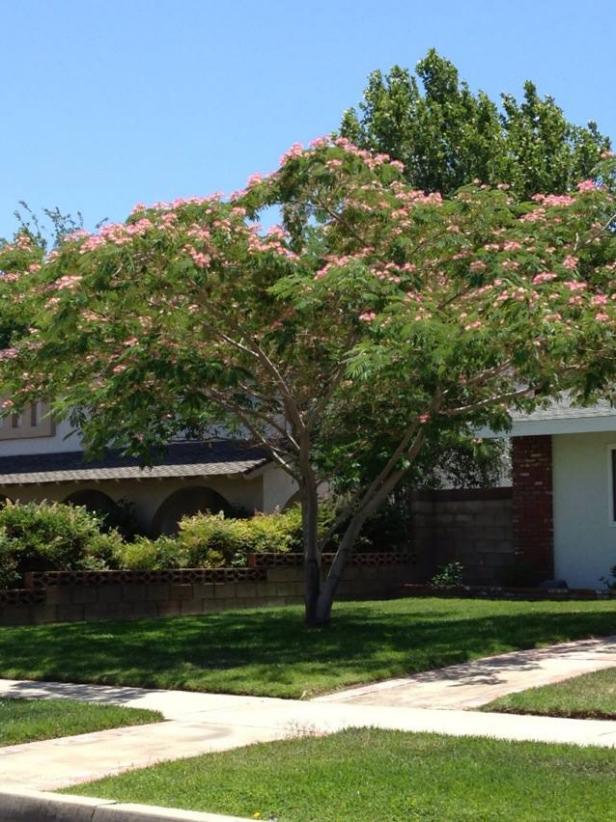

As summer temperatures climb, roadsides and forest edges are illuminated by the bright pink, powderpuff blooms of mimosa tree. While mimosa is stunning in flower, how this species behaves beyond the garden walls is anything but beautiful. A prolific seeder and vigorous grower, mimosa quickly spreads into natural environments, quickly crowding out native plants and the animals that depend on them for food and habitat.
Botanical Name: Albizia julibrissin
Common Name: Mimosa, Silk Tree
Bloom Time: Summer
Light Needs: Full sun to part shade
Hardiness Zones: 6 to 9
Height: 25 to 35 feet
Growth Rate: Fast
Why People Used to Grow Mimosa
Mimosa is a resilient, fast-growing small tree that is absolutely gorgeous in bloom. The fragrant and delicate, fluffy pink flowers are a magnet to hummingbirds, bees and butterflies. It is adaptable to many soil types and moisture levels and tolerates alkaline conditions and high levels of salinity. Its tiered branches form an umbrella-shaped canopy.
Why You Shouldn’t Grow Mimosa
Flowering mimosa was introduced to North America in the middle of the eighteenth century by the French botanist Andre Michaux. This species’ persistence in the landscape and heavy annual seed set allowed it to quickly escape from cultivation. Today, mimosa trees can be found growing rampantly along roadsides, forest edges and openings and open woodlands where they compete with native plants for resources. This has led to mimosa being classified as an invasive species in several southern and mid-Atlantic states.
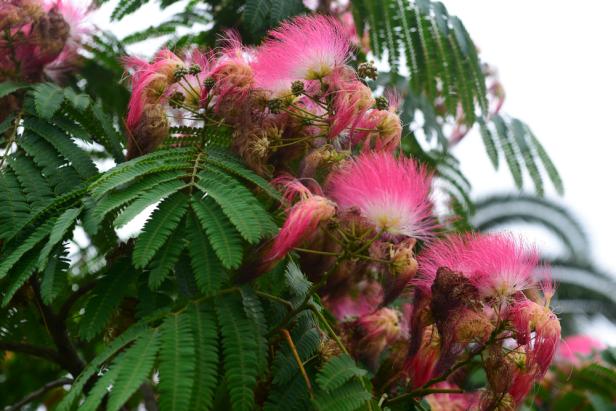
Shutterstock/Vahan Abrahamyan
Mimosa blooms are beautful, but mimosa is tough to contain once it escapes cultivation.
Although the nectar in mimosa flowers feeds pollinators like hummingbirds, butterflies and bees, this plant doesn’t support as many native caterpillars (butterfly larvae) and other insects that hummingbirds and other animals depend on for food. As a legume, mimosa is also able to "fix" nitrogen from the atmosphere, changing the nutrient composition of the soil. While it may be hard for a gardener to imagine such a thing as "too much nitrogen," this "fixing" actually harms many native species that have adapted to grow in nutrient-poor soils.
Invasive qualities aside, mimosa has some other bad habits that make it an unappealing choice. Mimosa trees are very messy, littering spent flowers, seed pods and sap from the foliage. They are very susceptible to Fusarium wilt, which is a disease that often kills trees completely to the ground. After the central tree has died, dozens or even hundreds of mimosa sprouts pop up from the roots, forming a dense thicket. This root suckering is very difficult to control in a garden setting and causes more aggressive competition with native plants when it happens outside of the garden along roadsides and in wild areas. Mimosa trees are very short-lived and usually need to be removed within 25 years of planting.
The purple-leaf variety ‘Summer Chocolate’ produces fewer viable seeds than the straight species. However, the seeds that it does produce are variable and are often more similar to the straight species than the mother plant. While it is good that this variety does not seed as prolifically, the seedlings that are produced could exhibit the same invasive qualities as the species if they escape cultivation.
Native Alternatives to Mimosa
There are many attractive native and other ornamental species that should be grown instead of mimosa. This list includes several species that might be a good fit for your garden.
- Red buckeye (Aesculus pavia) – 4- to 8-inch-long panicles of pinkish-red tubular flowers, beloved by hummingbirds; usually 10 to 20 feet tall in cultivation but can grow much larger in the wild; native to eastern North America, from Virginia south to Florida and west to Texas; hardy in Zones 4 to 8
- Serviceberry (Amelanchier arborea) – clusters of pendulous white blooms in the spring; flowers give way to red fruits that mature to delicious, black berries that are irresistible to birds and people alike; forms a small tree or multistemmed shrub that grows from 15 to 25 feet tall; fall color is a beautiful mosaic of gold, apricot and rusty red; native to eastern North America, from Maine to northern Florida and east to Idaho; Zones 4 to 9
- Redbud (Cercis spp.) – one of the earliest trees to bloom, redbud is cloaked by shades of pink or white buds for up to three weeks in the spring; a small tree that is relatively fast growing; grows between 20 and 30 feet tall with a slightly wider spread; usually an open, vase-shaped tree, but there are weeping forms, too; purple-toned heart shaped leaves emerge shortly after flowering in the spring, maturing to green (depending on the variety), then transforming to golden yellow in the fall; while the eastern redbud (C. canadensis) is most common in cultivation, there are subspecies and other species that are native to the south-central states (C. canadensis sbsp. texensis) and the west (C. occidentalis); Zones 4 to 9
- Fringe tree (Chionanthus virginicus) – in the late spring, fringe tree is showered in a riot of fluffy white blooms that eventually mature to attractive blue fruits that are beloved by birds; a slow-growing small tree or multistemmed shrub that usually doesn’t grow beyond 20 feet in height in cultivation; native to eastern North America, from New Jersey south to Florida and west to Texas; Zones 4 to 9, with some success in Zone 3
- American smoketree (Cotinus obovatus) – the threadlike flower stalks of the insignificant blooms make the plants appear to be covered in frothy pink smoke through the summer; a large shrub or small tree that usually grows between 20 to 30 feet tall; blue-green foliage transforms to spectacular shades of yellow, orange, red or purple; native range is limited to areas of Tennessee, Alabama and Texas; Zones (3)4 to 8
- Sourwood (Oxydendrum arboreum) – drooping panicles clothe this small tree in a veil of white blossoms in early summer; usually a small tree, slowly growing to between 25 and 30 feet tall, although there are some larger exceptions; showstopping gold, crimson and purple autumn color; native from southern Pennsylvania to western Tennessee and south to Louisiana; Zones (4)5 to 9
Managing Invasive Mimosa Trees
If you already have a mimosa tree (or if mimosa seeds constantly fall into your garden from a neighboring property), check with your state’s department of agriculture to find out whether mimosa is invasive in your area. If it is, try to remove your mimosa tree before it has the chance to set seed for the year.
Removing an Established Tree
According to the U.S. Forest Service, an established tree can be cut down or girdled as an initial control measure. To girdle a tree, the University of Florida’s Center for Aquatic and Invasive Plants directs that the bark must be cut between 6 inches and a foot from the base of the tree. The cut should go completely around the trunk and deep enough into the bark that the green vascular tissue is visible.
Mimosa plants regenerate quickly after being cut or damaged, which makes this species difficult to manage. Keep an eye out for root and stump suckers, and remove those by hand while they’re small and relatively easy to break. Some chemical controls can be effective for removing sprouts as well.
Preventing New Seedlings
As is true of most weeds, the smaller the mimosa seedling, the easier it is to control. Use your hand to pull up the entire plant or use a hoe to sever the roots from the shoots. Mimosa seedlings are much easier to pull from beds that have a healthy layer of plant-based mulch rather than soil or beds covered with rock mulch.










